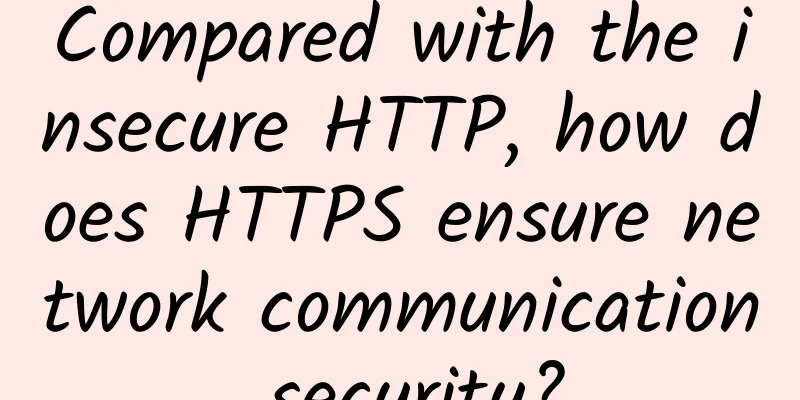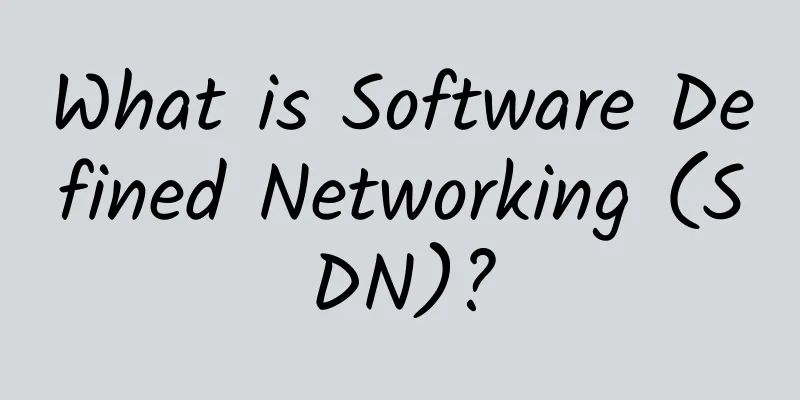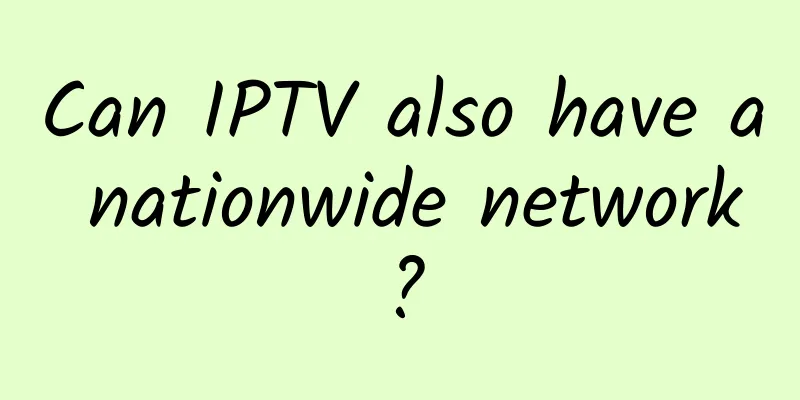Compared with the insecure HTTP, how does HTTPS ensure network communication security?

|
HTTP is an excellent communication protocol, but everything has two sides. The protocol also has shortcomings, which are roughly as follows:
1. HTTP does not have encryption function The HTTP protocol itself does not have encryption function, so it is impossible to encrypt the content of requests and responses. HTTP messages are in plain text, and data packets can be easily stolen when transmitted between networks, such as using packet capture tools (Wireshark). After capturing the data packets, they are analyzed. Since the messages are transmitted in plain text, if the content is about important privacy such as personal information, it may be obtained by others and used, causing losses. 2. Encrypt the content Encrypting content is a good way to protect information. HTTP does not have an encryption mechanism, so a third party is needed to help implement encryption. There are many ways to encrypt content, such as:
It is mainly divided into two categories, symmetric encryption and asymmetric encryption (we will not discuss encryption in depth here, and friends who are interested can refer to relevant information).
3. The shortcomings of only encrypting the content
Therefore, only encrypting the content is not perfect. A more comprehensive security solution is needed to ensure not only the security of the content but also the security of communications and other aspects - HTTPS. 3. What are SSL and TSL? Before discussing HTTPS, we need to understand the SSL and TLS protocols.
SSL technology was initially developed by Netscape, which developed versions before SSL3.0 and then transferred the leadership to IETF. IETF developed the TSL protocol based on SSL. The current mainstream versions are SSL3.0 and TLS1.0. 4. Basic concepts of HTTPS HTTPS is not a new protocol, it is to replace the HTTP protocol communication interface part with SSL and TSL protocols. As shown in the following figure: Analysis: HTTP and TCP communicate directly at first, but now HTTP communicates with SSL first, and then SSL communicates with TCP. It can be understood that HTTP becomes HTTPS by adding an extra layer of SSL protocol. Below, HTTPS is expressed through a formula: HTTP + encryption + authentication + integrity protection = HTTPS 5. How does HTTPS communicate? Overview: The HTTPS communication process combines symmetric encryption and asymmetric encryption. When the HTTPS server establishes SSL communication, it will first send its public key to the client. After the client obtains the public key, it negotiates with the server through asymmetric encryption for the symmetric encryption key of the data transmission channel. Once the two parties have negotiated a session key, subsequent data communications will always use the symmetric encryption algorithm based on the session key. Specific process:
Is using HTTPS perfect?
HTTPS is slower than HTTP because it requires SSL communication in addition to TCP connection and HTTP request response. Secondly, the client and server need to perform encryption and decryption processing. When the number of visits is large, the load will increase compared to HTTP. In addition, HTTPS communication requires the purchase of a certificate, which may not be cost-effective for some services or small websites. 6. In what scenarios is HTTPS more suitable? In summary, HTTPS is suitable for encrypted communication in services that require high security, such as transaction payment, including some services that may contain personal sensitive information. For non-sensitive information, HTTP communication is used.
VII. Conclusion HTTP is an excellent protocol, but its security is relatively poor due to reasons such as its lack of support for encryption. There are many ways to improve security, such as using encryption algorithms to encrypt content. The HTTPS protocol provides a more complete solution. HTTPS is not a new protocol, but a combination of HTTP and SSL/TSL to achieve communication security. However, HTTPS also has its shortcomings, so it must be used reasonably in combination with specific scenarios to give full play to the powerful role of HTTPS. |
<<: Huawei releases next-generation CloudLink video conferencing solution
>>: How 5G will revolutionize healthcare
Recommend
[Black Friday] DediPath: Dedicated servers in multiple data centers in San Jose/Los Angeles/New York/Dallas starting from $39/month
A few days ago, we shared the Black Friday VPS pr...
Can Chrome DevTools' Network be used like this?
If you were to pick the most used feature in Chro...
How do operators’ mountaineering teams climb “5G+Industrial Internet”?
Industry is the foundation of a country and the m...
A brief discussion on the integrated development of data centers
In the tide of information and communication tech...
The first batch of commercial 5G networks may not even be able to make phone calls?
01.Everyone is paying attention to the 5G Interne...
Why has the number portability service suddenly become silent? Should this service be cancelled?
Why did the once-noisy "big event" die ...
Graphical explanation | A brief history of what is HTTP
[[344212]] This article is reprinted from the WeC...
The past and present of IPv6 and the comparison with IPv4
IPv6 is the abbreviation of Internet Protocol Ver...
my country will open 1.4 million 5G base stations by the end of the year
This year is a period of large-scale 5G construct...
RAKsmart dedicated server flash sale starts from $30/month, high-defense server starts from 79/month, US/Japan/Korea/Hong Kong data centers
RAKsmart is a long-established foreign merchant o...
China Mobile's 5G package customers increased by 15.593 million in March, reaching a total of 188.761 million
[[394613]] On April 20, China Mobile announced it...
Operator T-Mobile announced: Delayed closure of Sprint 3G CDMA network for three months
On October 25, operator T-Mobile announced that i...
How to design a distributed ID generator?
Hello everyone, I am Brother Shu. In complex dist...
Experts in Cyber Threat Response in the Digital Age | Weibo Online Officially Announces Brand Upgrade
Recently, on the occasion of its seventh annivers...
Hengchuang Technology: Hong Kong cloud server starts from 32 yuan/month, buy 2 months of dedicated server and get 1 month free
Hengchuang Technology (henghost.com) has released...



![[11.11]RAKsmart: US servers start from $30/month, Japan/Korea servers start from $59/month, cluster servers start from $109/month](/upload/images/67cabd1fbfac6.webp)





